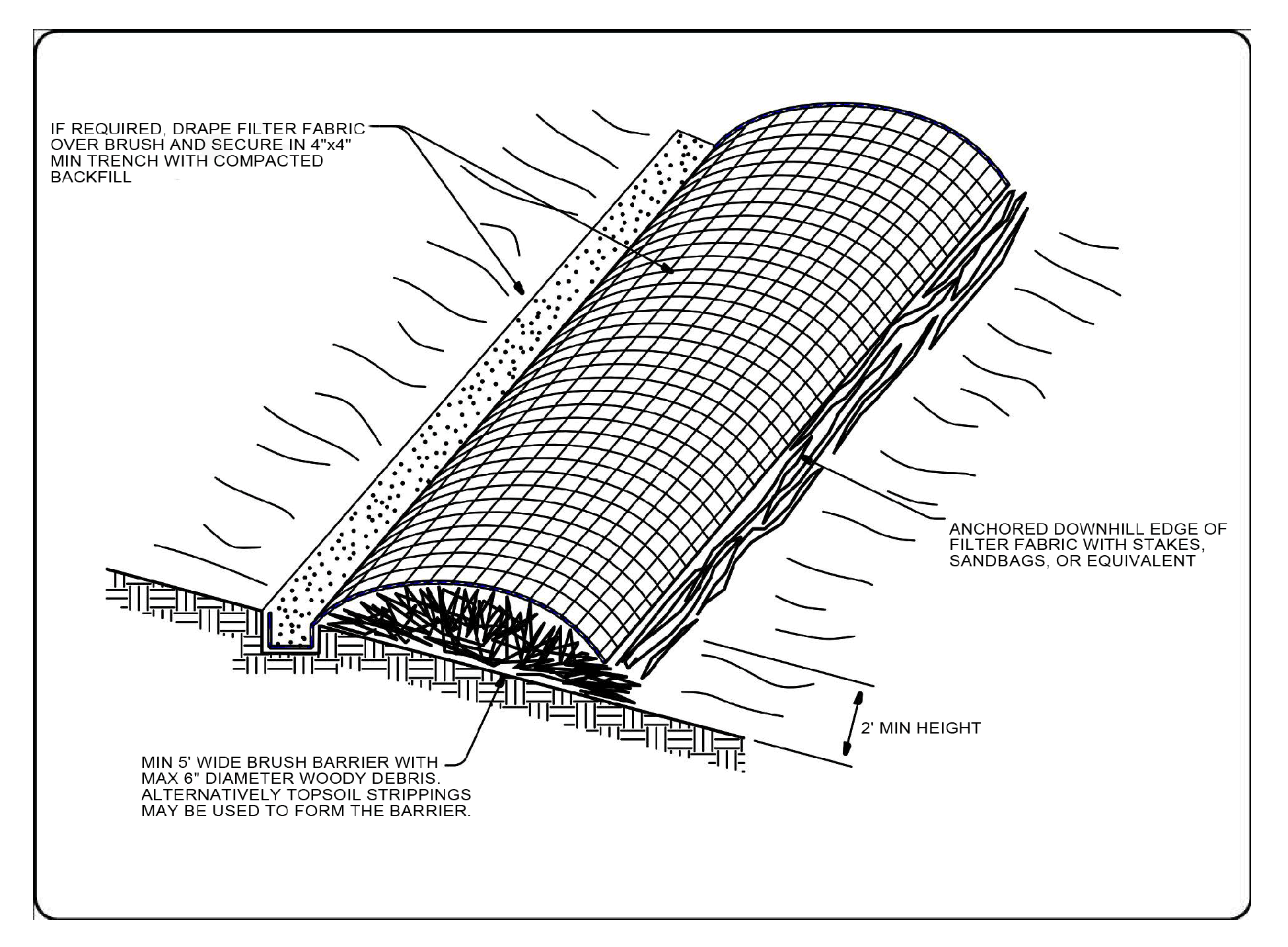The purpose of brush barriers is to reduce the transport of coarse sediment from a construction site by providing a temporary physical barrier to sediment and reducing the runoff velocities of overland flow.
Brush barriers may be used downslope of all disturbed areas of less than one-quarter acre.
Brush barriers are not intended to treat concentrated flows, nor are they intended to treat substantial amounts of overland flow. Any concentrated flows must be conveyed through the stormwater system to a sediment pond. The only circumstance in which overland flow can be treated solely by a barrier, rather than by a sediment pond, is when the area draining to the barrier is small.
Only install brush barriers on contours.
1.36.3 Design and Installation Specifications
Height 2 feet (minimum) to 5 feet (maximum).
Width 5 feet at base (minimum) to 15 feet (maximum).
Filter fabric (geotextile) may be anchored over the brush berm to enhance the filtration ability of the barrier. Ten-ounce burlap is an adequate alternative to filter fabric.
Chipped site vegetation, compost, or wood-based mulch (hog fuel) as specified in BMP C121 - Mulching can be used to construct brush barriers.
A 100 percent biodegradable installation can be constructed using 10-ounce burlap held in place by wooden stakes. Figure 3 - 22: Brush Barrier depicts a typical brush barrier.
Do not allow erosion or concentrated runoff under or around the barrier. If concentrated flows are bypassing the barrier, it must be expanded or augmented by toed-in filter fabric.
Maintain the dimensions of the barrier.
Figure 3 - 22: Brush Barrier
